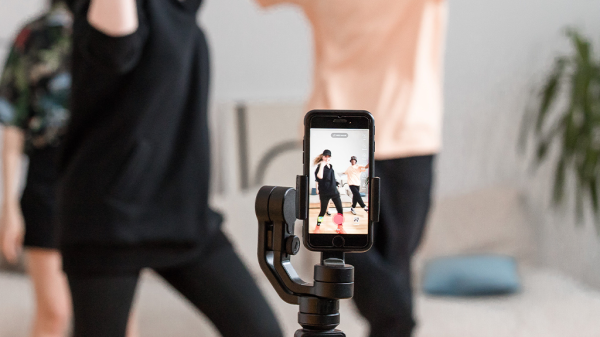 “Relations are starting to matter more than relationships.” ~ Adam Singer. Don’t freak out. This doesn’t mean that conventionally defined relationships are DOA. Cultivating and nurturing our core relationships is more important than ever, and always will be. But today, the revolutionary nature of Social Media allows us to expand our connections beyond conventionally defined relationships.
“Relations are starting to matter more than relationships.” ~ Adam Singer. Don’t freak out. This doesn’t mean that conventionally defined relationships are DOA. Cultivating and nurturing our core relationships is more important than ever, and always will be. But today, the revolutionary nature of Social Media allows us to expand our connections beyond conventionally defined relationships.
Social Media divas, gurus, zen masters, etc. generally agree, “when it comes to the size your Social Media network, bigger isn’t better.” They talk about the Dunbar 150 Number, and how it’s impossible to maintain real-meaningful-relationships with hundreds, let alone thousands. 150, that’s it, “If you have hundred’s of Facebook Friends, and or, Twitter Followers you’re not being “real”, or worse, you’re a poser, maybe even a spammer.”
I’m not sipping their Kool-Aid. I call Monkey’s-Uncle.
Why we should NOT limit our connections
Let me explain why we should not limit the number of our Friends, or Followers, to a feeble, 150 conventional relationships.
Like Adam illuminates in his blog post, in addition, to our conventional/traditional relationships, there’s another important category of connection –the Relations category. When we use Social Media to engage, and share with our friends, their friends can observe our interactions. Adam calls these friends of our friends, the audience of our audience.
In addition to friends of friends, I believe Adam’s Relations category can be expanded to include Friends and Followers we are psychographically compatible with. Because we share similar values, attitudes, interests, and lifestyles, we have a natural connection. Even though we don’t know each other well, because of our psychographic compatibility, we get each other. We don’t have a conventionally defined Relationship, we are Social Media Relations.
Why is this new category of connection important?
Because, the larger the number of people who know us, like us and trust us, and, know us as a choice-worthy, real estate agent, the more opportunities we will attract. Growing an expanded sphere-of-influence/network of Relations isn’t difficult, the key is to attract, Friend, Follow, share, and connect with the right people. The key to connecting with the right people, is choosing compatible psychographic tribes and people.
Growing our networks to include both conventional Relationships, and Relations, allows us to influence, share and serve, more people. Which means more business, and success. If we limit our sharing, and engagement, to only people we know personally, or we stop at Dunbar 150, we’ll soon be overshadowed by savvy Social Media competitors who have expanded their networks of influence, and amplified their Top Of Mind Awareness to include Relations, and Relationships.
This is why we can, and should have hundreds, and yes, even thousands of friends and followers.
Now how big do you think your network should be?
That’s what I’m thinking. What do you think? How big should your network be? Should you limit your friends or followers to conventionally defined Relationships, or expand to include Relations?
“Content and context define the future of successful marketing.” ~Adam Singer
We’ve been taught, and we intuitively know, keen content is supremely important. This applies online, and IRL. Ego or me-centered content is a nasty form of Selfish Selling, and is shunned by all. In general, sharing keen content is noticed and appreciated. If you want we want to sweeten the impact of our excellent content, we must share it in context.
con·text – noun
1. The circumstances in which an event occurs; a setting.
Sharing keen content in context, will transform what we’re sharing, into something hyper-relevant, and therefore more valuable. This, tattoos us, into their subconscious Top Of Mind Awareness, which makes us familiar, trusted, choosable, and referable.
How do we share in context? By sharing and engaging with compatible psychographic tribes. Tribes of people that have common hobbies, interests, activities and opinons. If we do this we’re sharing in a common language of context, familiarity, and interest. Sharing with strangers, or psychographically incompatible people, is the definition of out-of-context, irrelevant, and annoying.
So, what do you think so far? I hope I’m explaining it the way I feel it. Forgive me if I lost you, let me sum it up.
In Conclusion
- Conventional Relationships will always be supremely important.
- Our conversations, and what we share with our friends, is being evaluated, and appreciated, or not, by friends of our friends, what Adam calls, the audience of our audience. I believe Adam’s Relations category can be expanded to include Friends and Followers we are psychographically compatible with. Because we share similar values, attitudes, interests, and lifestyles, we have a natural connection. Even though we don’t know each other well, because of our psychographic compatibility, we get each other. Social Media allows us to cultivate expanded opportunities, by growing our networks to include conventionally defined Relationships, and Social Media Relations.
- Keen content is King, context is Queen. Amplify your context, and grow your influential kingdom, by sharing with the right people. The right people, are people who are psychographically compatible.
- Dunbar 150 isn’t really dead. But today, Social Media is redefining the number of people we can effectively influence, engage, and serve. If we limit the number of people we touch to only conventionally defined Relationships, we severely limit our opportunities. We have to think bigger than before.
- Grow your networks, and spheres of influence beyond conventional and traditionally defined Relationships, include only psychographically compatible people, and tribes.
Thanks for reading.
PS. The headline quote is from Adam Singer’s blog post titled: How To Cultivate The Socialization Of Your Business. To shine few watts on your future, check it out.
Ken Brand - Prudential Gary Greene, Realtors. I’ve proudly worn a Realtor tattoo for over 10,957+ days, practicing our craft in San Diego, Austin, Aspen and now, The Woodlands, TX. As a life long learner, I’ve studied, read, written, taught, observed and participated in spectacular face plant failures and giddy inducing triumphs. I invite you to read my blog posts here at Agent Genius and BrandCandid.com. On the lighter side, you can follow my folly on Twitter and Facebook. Of course, you’re always to welcome to take the shortcut and call: 832-797-1779.











































Janie Coffey
August 2, 2010 at 9:07 am
Ken, you really are my super hero! I love this post and it makes me rethink a few things about my approach to SM. REACH, @ProfessionalOne was just speaking about that this AM and it’s something I have been ignoring…. hmmmm, now I need to retool my follow back practices methinks
Ken Brand
August 2, 2010 at 9:55 am
Thanks Janie. I feel you, I forgot who said it, but it went something like this, “The problem is getting new ideas into our head, the challenge is to get the OLD ideas out.”
In this case, I think we all associate the word “Friend” as our buddy and pal, which is true in real life, but on-line, it’s can much more, and less.
Cheers, and thanks for sharing.
Ken Brand
August 2, 2010 at 9:59 am
Left off a key word, “Not”. DOH. “The problem is NOT getting new ideas into our head, the challenge is to get the OLD ideas out.”
Todd Barnard
August 2, 2010 at 11:24 am
“Sharing keen content in context, will transform what we’re sharing, into something hyper-relevant, and therefore more valuable…Keen content is King, context is Queen.”
Absolutely false statements(s) and utterly backwards in every way.
Benn Rosales
August 3, 2010 at 12:17 pm
I really wish you would elaborate more deeply into your thoughts on this.
Ken Brand
August 2, 2010 at 12:02 pm
Enlighten me Todd, how would you straighten this out? I’d love to learn all I can. Let it rip.
kb
An Bui, DocuSign Social Media
August 2, 2010 at 7:25 pm
Ken – thanks for the summary at the end. I read them first before I read your article and it helped me remember your key takeways.
Regarding content and context, I think information sharing also helps with proper attribution – while I trust my friends and family, I also trust them more when they also share the source and the source’s authority.
In a way, social media is the next evolution of search – instead of search engines depending on links to web pages, social content depends on links to online individuals.
Thanks again. 🙂
Ken Brand
August 4, 2010 at 12:17 pm
I agree. In our, don’t sell me, bore me, or bullshit me society, attribution, or show me, instead of tell me, is more important than ever.
Thanks for sharing.
cheers
Benn Rosales
August 3, 2010 at 12:14 pm
Well, putting this into context was much simpler when the space was smaller. Looking at a ‘relationship’s followers’ was once upon a time a visual aid into the the possibility for direct and indirect referral. If a follower had 50 followers, you could identify easily their friends/relationships and meet them.
We broke out the dry erase board yesterday and drew out what you’re describing and realized that it isn’t new in theory (had a phone discussion with Rob Hahn 2 years ago on the metrics of this reality, and presented in 2006 on this effect), what is new are the labels we’re trying to attach to sets of targets. Beyond your relationships is pull marketing, hence where the concept of being spam comes from – utilizing content to pull potential followers.
In context, marketing is king for conversion unless your goal is simply to become buddies. Beyond the Dunbar benchmark, you’re (indirectly and directly) prospecting and no longer utilizing social media as a consumer, you’re using it as a sales tool. But it seems that’s the way of it lately whether we like it or not. The rules are out the window simply because of the overwhelming emergence of more sales people from all walks of life diving into relationship sales (social networks).
I think this is why it’s so important to draw the distinction between social networking and using social media as a consumer. If no one is left to consume, which is where we’re heading, then as a mass, it becomes just a giant speaker system for every voice at one time. I foresee in the very near future more and more people trimming and cleaning their ‘relations’ (going private) to only realistically be their Dunbar. The same as we now forward through commercials using DVR and TIVO, until we ‘see something’ that catches our eye- context will again be king, but conversion potentially smaller if your reach is still small.
Thanks for making us drag out the crayons!
Ken Brand
August 4, 2010 at 12:14 pm
I agree, as mass social media marketing begins to distract, annoy and confuse, we all look for ways to stop it. Which is why, I remind myself, how important the context, and content portion is. Like everything else in society, if it’s good, people will want it. If I can share more good, than boring, and I have a larger audience, then I’m going to personally benefit, presumably, if my stuff (our stuff, her stuff, etc.) is good, people will want it, and will benefit as well. Or they will hit the delete/ignore/block button.
I think I agree with your third paragraph, “you’re using social media as a tool.”. I agree because as a salesman/service provider, I use everything as a tool; conversation, inperson socializing, cell phone, mail, eMail, etc. Everything is a tool. The trick, for me anyway, is to use the tools, without being a tool. Hopefully, sharing some combination of relevant, interesting, informative, entertaining, and memorable stuff.
I definitely agree with your thoughts on terms. I think we limit our opportunities by attempting to wrap our heads around new concepts/tools/etc., using by-gone-days definitions. Definitions like, what’s a “friend?”
While it’s all get’s sorted out by the masses, I’m gonna grow the size of my friends/audience/prospects/sphere/network/psychographic/tribe. If people don’t like, thats what the block/ignore/unfollow button is for.
I like with this too, “I think this is why it’s so important to draw the distinction between social networking and using social media as a consumer”. The beauty for me is, by using lists I can focus on the important-people-to-me, for social networking, and as a consumer, I do like to observe, query and benefit from my entire, mostly psychographically compatible, network.
Thanks for sharing your thoughts Benn. It’s a beautiful chaotic world, thankfully.
Cheers.
Benn Rosales
August 4, 2010 at 12:47 pm
Well, coca-cola is always in context for me, regardless of content. I love coca-cola, but I still forward through their ad spots whenever possible. 🙂
The same rings true for a professional. If all you are is in context content, then it’s only relevant to me when I’m buying a house. I may choose to add you to a list I consider soft spam, but as a possibility for later. I suppose that’s the best you could hope for?
OR you could worry less about the in context content, and focus in on the relationship as in this frame of reference- you remain top of mind, in the influence of the target, and become a potential referral source for him/her, as the most overlooked component of media marketing is the desire for even the target to influence his/her peers (back to the Dunbar 150).
Love this stuff.
Ken Brand
August 4, 2010 at 1:48 pm
Ahh, but Coke is Coke, it never changes.
As a professional, and a human, my context can range from funny Facebook Fails, to how set to Facebook Security Settings, to Average Price Per Square Foot, to where you should go to dinner. My context is personal, and professional. But yes, soft spam for sure. Unless we’re talking to our real buddies direct, soft spam makes sense, but it’s tolerable, as long at it doesn’t turn to hard spam, then I we all hit “ignore”. But if I strike it right, I’m semi-relevant, and I’m sharing with friends of friends. And I agree, “a possibility for later”, which is where I’m headed, positioning for Top Of Mind Awareness, when there’s a specific need. All the other times, I’m trying to be helpful, interesting, entertaining – anything by annoying.
A fine art.
Loren Sanders
August 4, 2010 at 5:13 pm
RT @MIrealestate: RT @AgentGenius: #agnow I agree. In our, don't sell me, bore me, or b.s me, society, attribution.. https://bit.ly/c0ZKkD
Ken Brand
August 5, 2010 at 12:37 pm
Suppose your BIG or small Brokerage, or your local MLS incorporated this new service, outlined by 1000Watt { 1000wattconsulting.com/blog/2010/08/peep-ly-puts-your-social-graph-to-work.html }, would you opt for a small manageable network, or go big?
Start growing, or you’ll disappear.